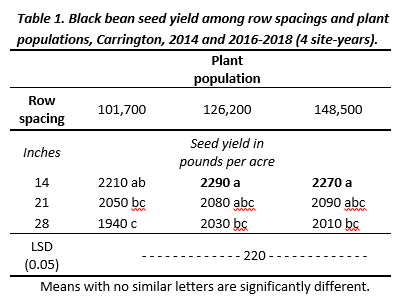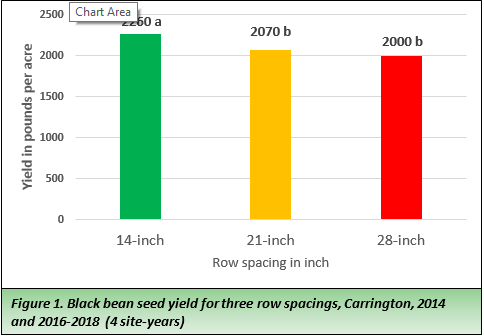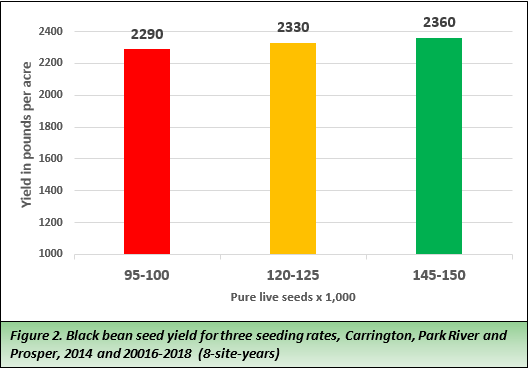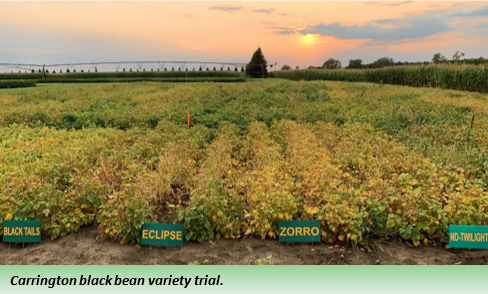Black Bean Yield Response to Row Spacing and Plant Population (05/19/22)
Black dry edible bean is the second most commonly grown bean market class in North Dakota and Minnesota (17.8% of total bean acres, based on the 2021 Northarvest bean grower survey). North Dakota State University’s current recommendation is to establish 90,000 – 120,000 black bean plants per acre across row spacings. The 2021 survey indicates 24% of growers planted at a seeding rate of 120,000 or greater seeds per acre. Also, the survey indicates 16% of growers use rows less than 21 inches wide and 66% use row spacings of 21 to 25 inches wide.
A North Dakota study re-examined the interaction of black bean row spacing and plant population to identify potential seed yield increase with narrow rows and greater plant populations. Eclipse black bean was planted in 14-, 21- and 28-inch rows at 100,000, 125,000 and 150,000 pure live seeds per acre at Carrington in 2014 to 2018.
Black bean seed yield was statistically different among means of the two factors averaged across four years at Carrington (Table 1). Among plant populations, which averaged 101,700, 126,200 and 148,500 plants per acre, yield increased 13% to 14% with 14-inch rows compared to 28-inch rows. However, among plant populations, 21-inch rows had similar yield as 28-inch rows. Within each row spacing, yield did not differ among plant populations.

Averaged across four years and plant populations at Carrington, black bean yield with 14-inch rows was 9% and 13% greater compared to yield with 21- and 28-inch rows, respectively (Figure 1). Plant emergence, flowering and physiological maturity dates generally were similar with row spacing each year of the study (data not shown). Canopy closure visually evaluated during late July to early August and averaged over three years was 85%, 76% and 64% with 14-, 21- and 28-inch rows, respectively. Test weight and seed size generally were similar among row spacings (data not shown).

Means with different letter are significantly different. LSD (0.05) is 130 pounds per acre.

Means are not significantly different.
Averaged across eight site-years, black bean planted at the low, medium and high rates produced 99,100, 118,500 and 140,700 plants per acre, respectively. Yield was statistically similar among plant populations (Figure 2). Plant emergence, flowering and physiological maturity dates generally were similar with plant population (data not shown). Canopy closure, averaged across five site-years, generally was similar among plant populations. Also, test weight and seed size were similar with plant population at each of the eight site-years of the study.

The study results confirm why current black bean grower are reducing row width and increasing plant populations.
Source Black and Navy Bean Response to Row Spacing and Plant Population in Eastern North Dakota,
Extension publication A1921 (revised April 2022)
Extension Cropping Systems Specialist
NDSU Carrington Research Extension Center
Extension Agronomist Broadleaf Crops
